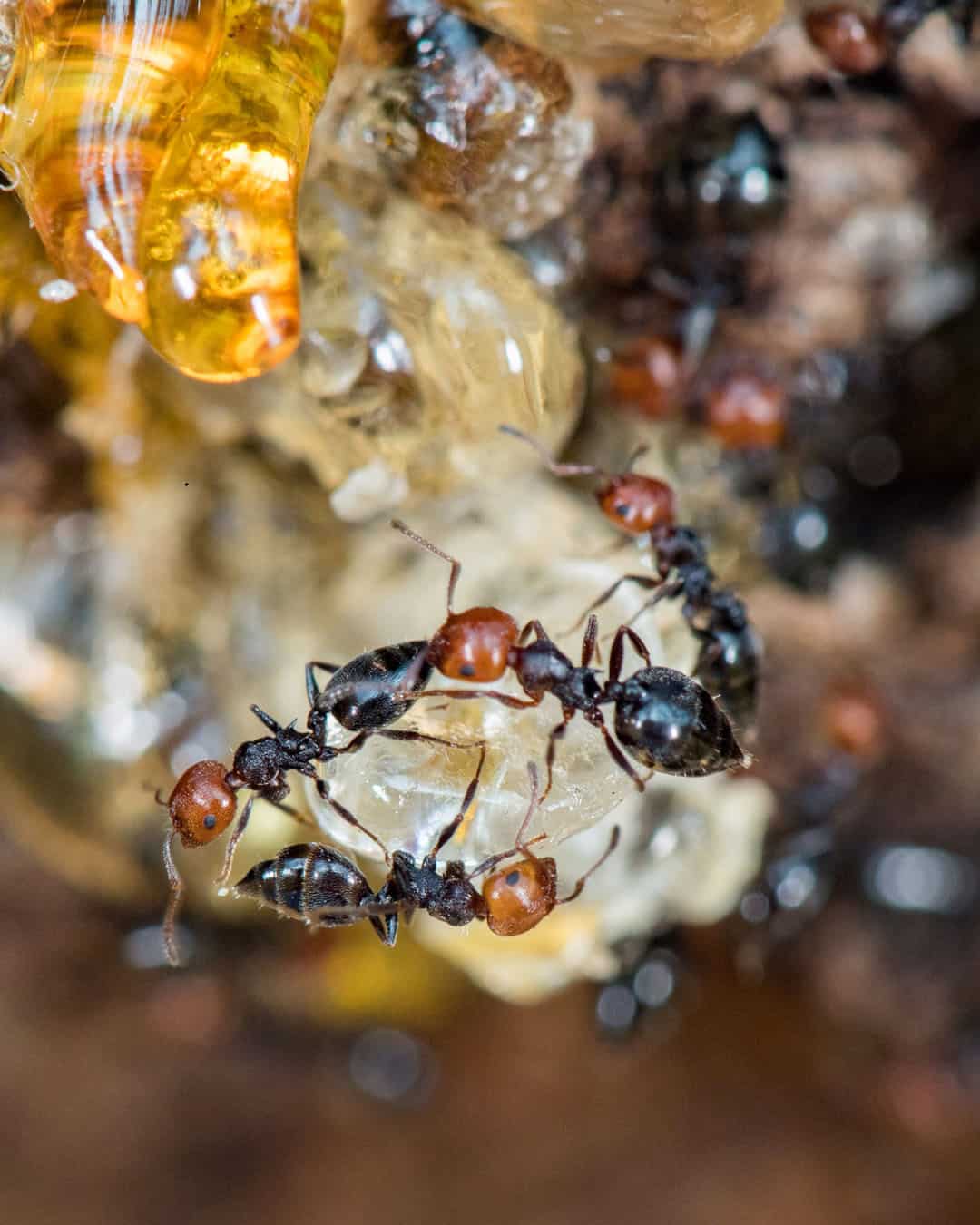Honey Ant Facts & Information
Honey ants, known for their unique storage capabilities where certain worker ants act as living food reservoirs, can become a nuisance when they invade homes and gardens. These ants store food in the abdomens of specific workers called repletes, which swell up to store honeydew and other sweet substances.

Myrmecocystus mexicanus
What You Need To Know About Honey Ants
What do honey ants look like?
Honey ants vary in size depending on their role within the colony, typically measuring between 1/4 to 1/2 inch in length. They are generally light brown to dark brown in color. Repletes, or specialized worker ants, have swollen abdomens filled with honeydew, which they store and use to feed the colony.
What do honey ants eat?
Honey ants feed on nectar, honeydew from aphids and other insects, and plant sap. The repletes store liquid food in their abdomens, which can swell significantly, and regurgitate it to feed other members of the colony when food is scarce.
What sort of habitat do honey ants live in?
Honey ants are found in arid and semi-arid regions, including deserts and dry forests. They build underground nests with chambers where repletes hang from the ceilings, storing food. These nests are typically located in sandy or loose soil.
How do honey ants commonly behave?
Honey ants are known for their unique adaptation of storing food in the bodies of repletes. Foraging ants collect nectar and other liquid food sources, which are then transferred to the repletes. During times of food scarcity, repletes provide nourishment to the colony by regurgitating the stored food.
Did you know this about honey ants?
Honey ants’ repletes can store so much liquid food that their abdomens become translucent and look like tiny, living honey jars. This adaptation allows the colony to survive during periods when food is not readily available. Indigenous peoples in Australia and North America have traditionally harvested repletes as a natural sweet treat. This fascinating behavior of storing and sharing food makes honey ants a remarkable example of cooperative living and resource management in the insect world.
Understanding Honey Ant Infestations
Understanding honey ant infestations is crucial for effective management. Honey ants typically nest in the soil and form extensive underground colonies. They are attracted to sweet substances and can invade homes in search of food. While they do not pose direct health risks, their presence can be bothersome and indicate a larger colony nearby.

How Hearts Handles Honey Ant Treatment
Hearts Pest Management employs an integrated pest management approach to handle Honey Ant infestations.
Honey Ant Inspection
Honey Ant Treatment
Honey Ant Prevention
Educational Resources

Think You Might Have a Honey Ant Infestation?
At Hearts Pest Control, we understand the challenges associated with Honey Ant infestations and are here to provide professional solutions tailored to your needs. Flourishing in warm and humid climates, they are prevalent in many regions, including San Diego County, Orange County, and Los Angeles County.